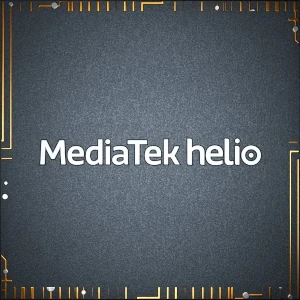MediaTek Dimensity 8050 vs MediaTek Helio G37
Welcher Prozessor ist besser? Wir haben MediaTek Dimensity 8050 und MediaTek Helio G37 verglichen. Vergleichen Sie, analysieren Sie die technischen Daten. Finden Sie heraus, welche Ergebnisse sie in den beliebten Benchmarks (AnTuTu 10, GeekBench 6 Einzelkern, GeekBench 6 Mehrkern) erzielt haben und wer der Sieger sein wird.
AnTuTu 10
Gesamtpunktzahl
GeekBench 6 Einzelkern
Punktzahl
GeekBench 6 Mehrkern
Punktzahl
Prozessor Kerne und Architektur
| Architektur | 1x 3 GHz – Cortex-A78 3x 2.6 GHz – Cortex-A78 4x 2 GHz – Cortex-A55 |
4x 2.3 GHz – Cortex-A53 4x 1.8 GHz – Cortex-A53 |
| Zahl der Kerne | 8 | 8 |
| Befehlssatz | ARMv8.2-A | ARMv8-A |
| Lithographie | 6 nm | 12 nm |
| TDP | 2.2 Watt | |
| Neuronale Verarbeitung | MediaTek APU 570 |
Arbeitsspeicher (RAM)
| Maximaler Speicher | bis zu 16 GB | bis zu 8 GB |
| Speichertyp | LPDDR4X | LPDDR4X |
| Speicherfrequenz | 2133 MHz | 1600 MHz |
| Speicherbus | 4x16 bit | 2x16 bit |
Speicher
| Speichertechnologie | eMMC 5.1 |
Grafik
| GPU name | Mali-G77 MP9 | Imagination PowerVR GE8320 |
| GPU-Architektur | Mali Valhall | PowerVR Rogue |
| GPU-Taktfrequenz | 886 MHz | 680 MHz |
| Ausführung Einheiten | 9 | 1 |
| Shader | 288 | 64 |
| OpenCL API | 2.0 | 1.2 |
| OpenGL API | ES 3.2 | |
| Vulkan API | 1.3 | 1.1 |
Kamera, Video, Display
| Max. Bildschirmauflösung | 2520x1080 | 2400x1080@90Hz |
| Max. Kameraauflösung | 1x 200MP | 1x 50MP, 1x 25MP, 2x 13MP |
| Max. Videoaufnahme | 4K@60fps | FullHD@30fps |
| Video-Codec-Unterstützung | AV1 H.264 (AVC) H.265 (HEVC) VP9 |
H.264 (AVC) H.265 (HEVC) |
Wireless
| 4G-Netz | Ja | Ja |
| 5G-Netz | Ja | Ja |
| Spitzen-Download-Geschwindigkeit | 4.7 Gbps | 0.3 Gbps |
| Spitzen-Upload-Geschwindigkeit | 2.5 Gbps | 0.15 Gbps |
| Wi-Fi | 6 (802.11ax) | 5 (802.11ac) |
| Bluetooth | 5.2 | |
| Satellitennavigation | BeiDou GPS Galileo GLONASS NavIC QZSS |
BeiDou GPS Galileo GLONASS QZSS |
Ergänzende Informationen
| Datum der Einführung | 2023 Quartal 2 | 2020 Quartal 2 |
| Teilenummer | MT6893, MT6893Z_T/CZA | MT6765H |
| Vertikales Segment | Mobiles | Mobiles |
| Positionierung | Mid-end | Low-end |
Beliebte Vergleiche:
1
MediaTek Dimensity 9400 Plus vs Unisoc Tanggula T740 5G
2
MediaTek Helio G88 vs MediaTek Dimensity 1000 Plus
3
Qualcomm Snapdragon 6s Gen 3 vs Qualcomm Snapdragon 8 Gen 2
4
MediaTek Dimensity 9500 vs Apple A18 Pro
5
MediaTek Dimensity 9200 Plus vs Qualcomm Snapdragon 768G
6
MediaTek Dimensity 9300 Plus vs MediaTek Helio G92 Max
7
Unisoc T8300 vs Qualcomm Snapdragon 765
8
MediaTek MT6739 vs Qualcomm Snapdragon 712
9
Qualcomm Snapdragon 439 vs Unisoc Tiger T620
10
Unisoc Tiger T612 vs Qualcomm Snapdragon 821

